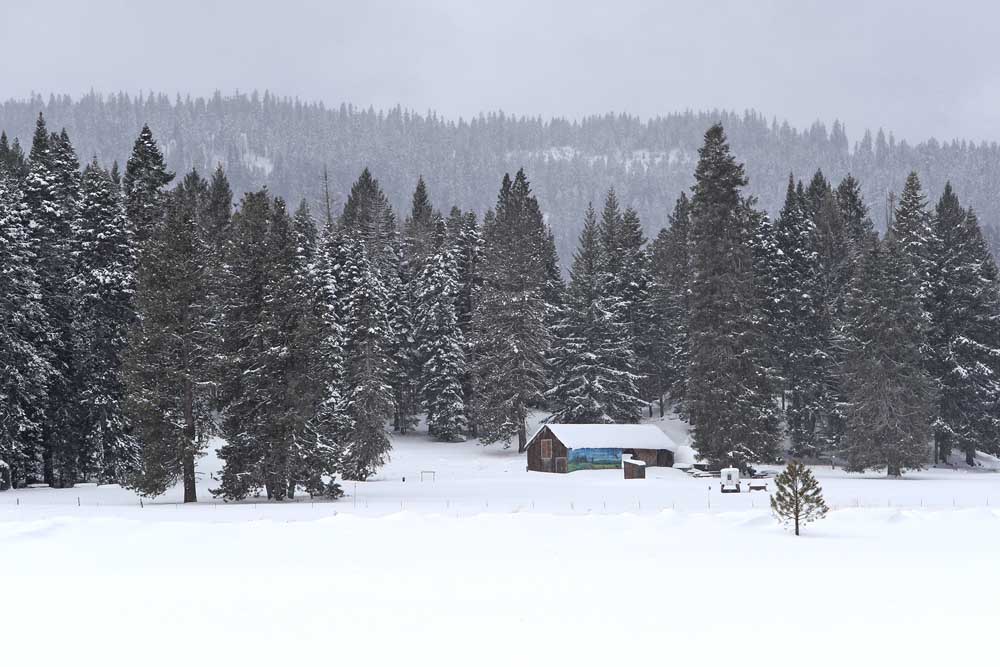Douglas fir trees in ‘decline spiral’ in Klamath Mountains ecoregion
Published 10:00 am Friday, March 24, 2023

- A cabin near Howard Prairie Lake is surrounded by Douglas fir trees. Douglas firs are in a 'decline spiral' in southwest Oregon, scientists say.
Douglas fir trees in southwest Oregon are suffering.
Amid a years-long drought, atmospheric aridity and insect infestation, Douglas fir have entered what scientists are calling a “decline spiral” in southwest Oregon.
A study by Oregon
State University faculty published in the Journal of Forestry found that the mortality rate of the species has soared in the Klamath Mountains ecoregion since about 2015.
For the past few years, most tree deaths have occurred on about 10% of the forested area in southwest Oregon, according to a rough estimate from Max Bennett, the forestry agent who led the study at the university’s Extension Service.
“That’s not to imply that all the Douglas fir trees on that 10% are dead or dying, but it is noticeable,” Bennett said in an interview. “It’s pretty significant.”
Bennett and his colleagues focused their research on Jackson, Josephine and Douglas counties. The decline of Oregon’s state tree, however, extends into Northern California.
Trees at high elevation and in areas with more rainfall don’t experience the same problems.
Most affected are Douglas fir growing in hot, dry, lower-elevation areas where the species may not have been abundant historically, Bennett said.
Drought conditions combined with more summer heat produce water-stressed trees. Then comes the flatheaded fir borers — beetles that burrow into bark and can finish off a tree within a year.
“The flatheaded fir borer is just kind of the coup de grâce,” Bennett said. Other insects, as well as fungi, contribute to the decline.
Aerial photos show green forest patched and streaked with reddish-brown, where dead trees stand among the living, the damage touching the Rogue, Applegate and Umpqua valleys.
The scientists developed “risk scores” to determine, based on visible symptoms, the likelihood of decline within two years for individual trees and entire stands.
This diagnostic tool can be used by landowners, as well as foresters working for the U.S. Forest Service or the federal Bureau of Land Management.
“Essentially, we can kind of map the areas that are most vulnerable,” Bennett said.
In addition to the loss of wildlife habitat, the buildup of dead trees contributes to fuel loads and the potential for catastrophic wildfires, Bennett said.
The decline also hurts timber production. Companies use Douglas fir in softwood products such as boards and wood fiber, Oregon State said in a news release.
“Native Americans traditionally used the wood of Douglas fir for fuel and for tools, its sap as a sealant and many parts of the tree for medicinal purposes,” the release said.
To an extent, the decline spiral will have to play out, Bennett said.
In the meantime, treatments such as thinning and controlled burning create more growing space that can help a stand be more resilient after future droughts and pest problems, he said.






